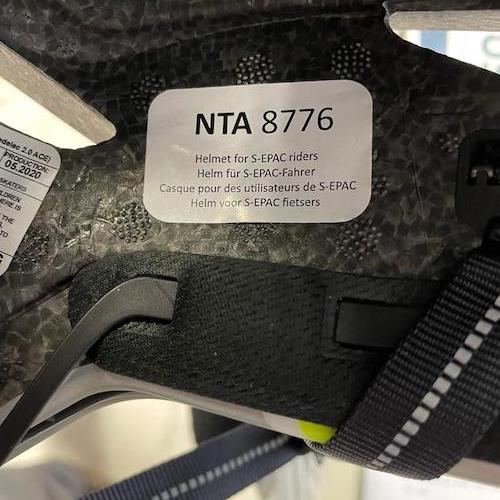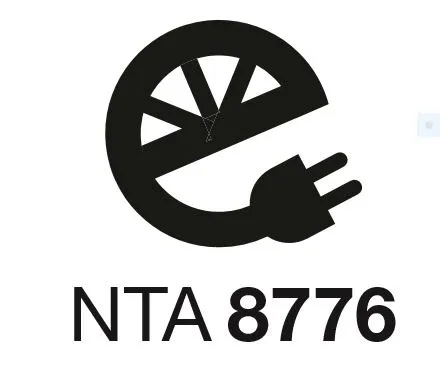
Helmets are not created equal. And while helmets are not created equal, we’re pleased to report that every helmet sold in the US meets stringent requirements for rider safety. Recently, though, another helmet standard has emerged and is being promoted for e-bike riders.
Since 1999, every helmet sold in the US has been required by law to meet standards set by the Consumer Product Safety Commission. Every helmet model designed by a manufacturer is subjected to a series of tests to make sure it will reduce impact force to the head, as well as hold together in the event of a mishap.
In the Netherlands, the emergence of what Europeans call pedelecs (Class 3 e-bikes that can reach pedal-assist speeds of up to 28 mph), has caused a reevaluation of helmet safety requirements. The government of the Netherlands created a new helmet safety standard—NTA 8776 is the technical designation—meant to provide a higher level of safety to riders.
The obvious question is why some e-bike riders might need a helmet providing a greater level of safety. We’re going to look at how rider speeds affect impact force, break down the different standards and then explain what the new Dutch standard offers riders.
Spoiler alert: it offers a lot. Let’s break it down why we here at Best Electric Bikes think this matters a lot.
Deceleration
Whether we are walking, running, riding an e-bike or in a car, how we come to a stop matters. When we’re driving, gradually braking as we approach an intersection is a good deal more pleasant than suddenly slamming on the brakes. It’s the same for riding an e-bike, of course; using the brakes to slow to a stop is better than any sudden stop.
Unfortunately, not all stops are intended, or controlled. Should a rider suffer a mishap and fall to the ground there is a chance they might hit their head. How the rider’s head hits and the speed of that hit are the considerations that form the basis for testing standards for helmets.
Let’s take a look at how impact force climbs as someone suffers a fall.
- If a rider weighing 180 lbs. going 15 mph falls, they will hit with a force of 57g; that is, 57 times Earth’s gravity.
- If that same rider falls going 28 mph, they will hit with a force of 200g.
As we can see, speed hasn’t even doubled, yet the force of the crash, measured in multiples of Earth’s gravity, has nearly quadrupled.
Next, we will take a brief look at how many standards there are and then dig into the specifics of the new Dutch standard, as well as the CPSC’s requirements that helmets sold in the US must meet.
The many standards

When a manufacturer makes a helmet, depending on what country/market it will be sold, the helmet must be tested and pass a series of tests in order to be judged safe enough to be on the market.
Because not everyone agrees on the level of safety necessary for riders, there are a number of different standards, though some are recognized in multiple countries.
Here’s a list of the different standards, what they are and where they are applicable:
- CPSC 1203—supplanted ANSI and Snell standards in the United States; adopted Brazil, Canada, China, Japan and Taiwan
- EN 1078—32 countries across Europe
- ASTM F1952—this is an American standard for downhill helmets that has been adopted in many countries
- Snell B-95—an American standard that is both stringent and voluntary
- NTA 8776—this is the Dutch standard created to judge helmets for people riding pedelecs (Class 3 e-bikes)
What is NTA 8776?
Many articles and websites selling helmets call NTA 8776 the first standard for e-bike helmets. This is an oversimplification. All helmets sold in the US have met helmet safety standards defined by the CPSC.
What the Dutch NTA 8776 standard does is raise the bar for safety. That’s because the standard was created expressly for people riding Class 3 e-bikes. Should a rider experience a fall or other crash at 28 mph, the amount of energy transmitted in impact is substantially higher than at 20 mph.
What tests are performed?
Because NTA 8776 is meant to demonstrate a higher level of protection for riders who are traveling at speeds greater than 20 mph, the tests need to be more difficult to pass. For a helmet to receive the NTA 8776 stamp of approval, a helmet must pass two tests.
To perform the crash tests, the helmet is strapped to a steel head. The helmeted head is then dropped on a flat anvil from a height of 2.15m (7 feet) to simulate a head-first impact. The second test sees the helmet strapped to the steel head and this time dropped on a “curbstone” anvil (one that is shaped like the curb at the edge of the road) from a height of 1.5m (4.9 feet).
The steel head used in the test contains a triaxial accelerometer which has the ability to measure impact force from any direction. To pass the Dutch test, a helmet may not record more than 250g. That is, a force 250 times earth’s gravity.
By contrast, the CPSC requires a test lab perform the flat anvil test from a height of 2m (6.5 feet). The curbstone test is performed from a height of 1.2m (3.9 feet). The CPSC also requires the helmet with the steel head strapped in place be dropped onto a spherical anvil, also from a height of 1.2m.
In the CPSC tests, the steel head also contains a triaxial accelerometer, but the permissible impact force cannot exceed 300g.
The big picture
It’s fair to ask how much relevance these tests have to real-world experience. According to the American Association of Neurological Surgeons a fall of as little as 2 feet can result in a traumatic brain injury. In terms of impact force, 85g can result in injury. The difference a helmet makes in reducing the severity of an injury can be the difference between getting up from a fall with a headache and double vision or feeling fine.
The new Dutch standard increases a rider’s safety by 16.67 percent. That may not seem like a lot, but cutting impact force by 50g will make a noticeable difference in someone’s experience.
The technical achievement of helmets conforming to the Dutch standard is also notable because these helmets weigh nearly the same as existing helmets. Had the standard resulted in a cut in the number of vents or doubling the weight of the helmet, it seems unlikely that those helmets would find success in the market. NTA 8776 results in helmets that appear virtually the same as CPSC conforming helmets to a rider when worn.
Who needs it?
While the Dutch standard was created to meet the needs of people riding Class 3 e-bikes, all e-bike riders can benefit from a helmet that reduces impact force in the event of a crash. There are no downsides to helmets that meet this standard.
While many manufacturers promote helmets based on the number of vents they have, integrated lights or fancy finishes, because a helmet’s purpose is to reduce the chance of injury should a rider suffer a mishap, our recommendation to anyone shopping for a new helmet is to prioritize those helmets that meet the NTA 8776 standard.
We’ve only got one brain, after all.


Leave a Reply